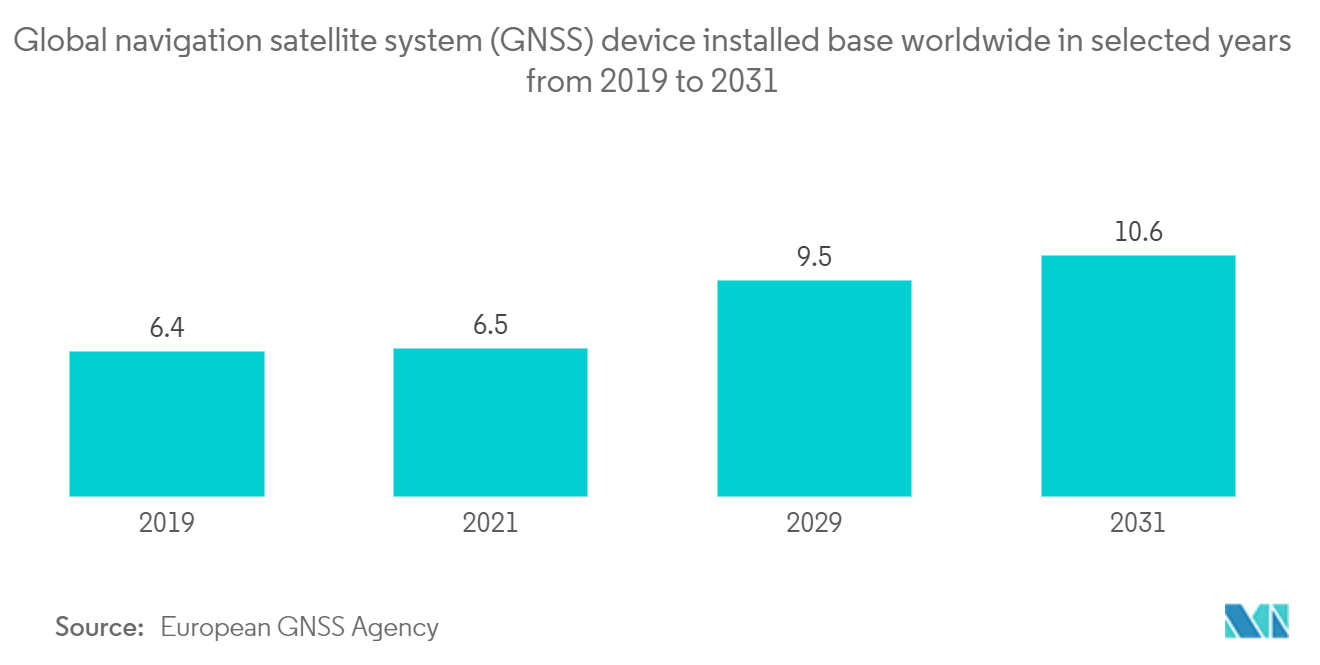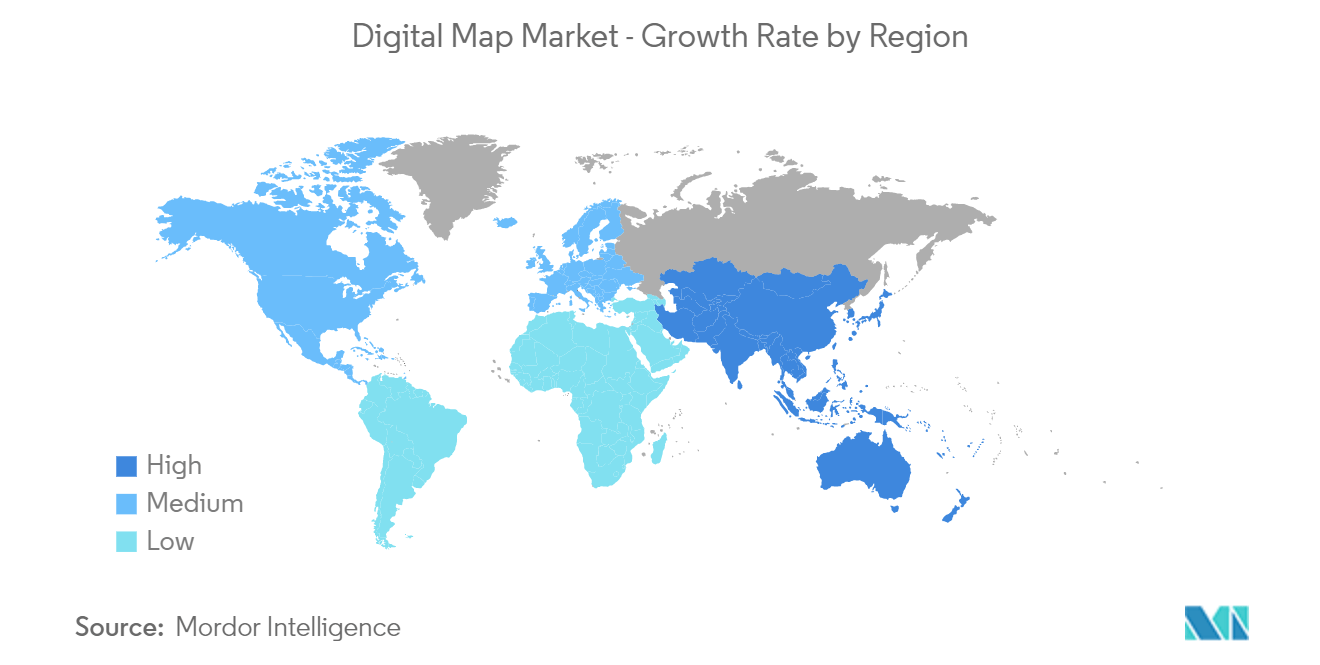Market Trends of Digital Map Industry
This section covers the major market trends shaping the Digital Map Market according to our research experts:
Surge in Demand for GIS and GNSS to Influence the Adoption of Digital Map Technology
- Geographic Information Systems (GIS) and Global navigation satellite systems (GNSS) are potent technologies in digital map solutions. As the GIS and GNSS vendors are developing mobile-based geospatial sensor platforms, digital map solutions are becoming more advanced with vector development and map simulation techniques.
- Expanding telecom networks and wireless connectivity is leveraging GIS-powered maps to gain user accessibility and real-time map execution. Data analytics is also one of the emerging areas to augment the application of GIs with spatiotemporal data and multidimensional connectivity. Moreover, GIS technology advances digital mapping capability with simulation forecasting, planning, landscape analysis, mobility management, and object tracking, which is anticipated to fuel the growth of digital map solutions in the forecast period.
- Various Global Navigation Satellite Systems (GNSS) deployed (such as GLONASS) or under development in recent times (such as BeiDou and Galileo) would reinforce the impact of satellite positioning in the daily lifestyles of people. Hence, there lies a massive growth in the applications and requirements for consumer-level positioning in cars, other vehicles, and smartphones. Moreover, the market is witnessing various product innovations and launches by key players as part of its strategy to improve business and their presence to reach customers and meet their requirements for multiple applications.
- For instance, in September this year, Aurora Insight declared the launch of a space-based radio frequency interference (RFI) monitoring service that could alert GNSS signal vulnerabilities or interferences worldwide. Aurora thus takes a unique approach to interference monitoring by delivering organizations with a global layer of data that informs GNSS customers of potentially harmful interference. The map-based tool can also help keep organizations informed about the ever-changing wireless environment while delivering a holistic view of the global state of interference.
- As per the European GNSS Agency, last year, the installed base of global navigation satellite system (GNSS) devices worldwide stood at around 6.5 billion units and is thus predicted to rise to about 10.6 billion devices by the end of 2031. Last year, the global navigation satellite system (GNSS) market was valued at approximately 150.5 billion USD. Hence, with the overall rise in the installed base of global navigation satellite system (GNSS) devices globally, the market is expected to witness exponential growth throughout the forecast period.

Asia-Pacific is the Fastest Growing Region for Digital Map Market
- Asia-Pacific is one of the fastest-growing regions in the Market. It is primarily due to the rise in the E-commerce sector, considerably requiring digital maps is expected to be one of the other major driving forces for this Market. Companies like Flipkart and Alibaba, major e-commerce players, have invested in Global Positioning System (GPS) tracking and geographic information system (GIS) solutions. Alibaba invested in the location platform PlaceIQ, which uses location as a utility to identify and model consumer behavior.
- Countries including India, China, Singapore, Japan, Australia, and South Korea have seen a significant shift in technological adoption in recent years. Increased utilization of digital map solutions for e-commerce applications, mobile data coverage, urban planning, supply chain & logistics management, and environmental monitoring in all these Asian countries will influence the adoption of digital maps in the coming years.
- Moreover, the gaming companies in the region are some of the primary adopters of advanced AR technologies globally. The introduction of sophisticated games being played in virtual environments is one of the major application areas for GIS-based systems. Though China dominates the gaming sector, Japan is the third largest Market according to game revenue and generates over USD 14 million a year.
- The growth of the automotive sector in the region is expected to be one of the primary drivers of the Market in the future. Leading the next wave of change in automated vehicles, players like Nissan, Toyota, and Honda have already developed technology similar to Level-2 ADAS systems. This is one of the major areas of application for HD Map solutions offered by players like TomTom BV, which now have a major presence in countries like South Korea and Japan.
- Furthermore, China Mobile, a telecom company, has announced to release of over 47 mobile ends supporting 5G networks, including AR/VR, developed by 34 partners, including Huawei, Samsung, Vivo, and Oppo. China Mobile has also mentioned that 10 million people are already using the 5G network, and the figure is expected to reach 600 million by 2025 in the country. This is expected to aid the region's adoption of GIS-based location solutions.

